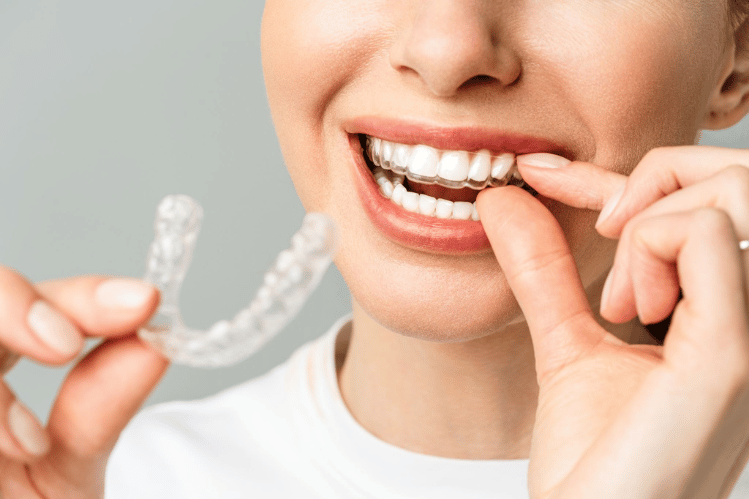All About Legacy Orthodontics
All About Legacy Orthodontics
Blog Article
The smart Trick of Legacy Orthodontics That Nobody is Talking About
Table of ContentsThe Basic Principles Of Legacy Orthodontics Not known Details About Legacy Orthodontics Some Known Details About Legacy Orthodontics Legacy Orthodontics for BeginnersNot known Incorrect Statements About Legacy Orthodontics
At Advanced Orthodontics, we offer individuals with a all natural treatment experience. Furthermore, we provide adjustable treatment routines, versatile repayment alternatives and an enjoyable, pleasurable experience. leesburg braces. Phone call ( 480) 357-4900 today for more details and timetable a visit.An orthodontist is a dental professional trained to identify, protect against, and deal with teeth and jaw abnormalities. Orthodontists work with individuals of all ages, from kids to grownups.
Malocclusion, or misaligned teeth, can lead to oral problems, including dental cavity, gum disease, and difficult or uncomfortable eating. Not everybody is born with straight teeth. If you have a negative bite or large rooms between your teeth, you may intend to seek advice from a dental practitioner focusing on orthodontic care.
Not known Details About Legacy Orthodontics
( Image Debt: DigitalVision/Getty Images) Orthodontists utilize repaired and detachable oral gadgets, like braces, retainers, and bands, to alter the setting of teeth in your mouth. Orthodontic therapy is for oral problems, including: Crooked teethBite issues, like an overbite or an underbiteCrowded teeth or teeth that are as well far apartJaw misalignmentThe goal of orthodontic treatment is to improve your bite.
While you might think of orthodontists as generally for children or teenagers that need braces, they can fix dental troubles at any type of age. Orthodontists participate in university, oral institution, and orthodontic institution.
, yet not all dentists are orthodontists. They focus on 2 locations: How to properly and safely move teeth How to appropriately assist advancement in the teeth, jaw, and faceOnce an orthodontist has actually finished training, they have the alternative to end up being board accredited.
About Legacy Orthodontics
Misalignment, or malocclusion, is one of the most common reason individuals see an orthodontist. It is genetic and is the outcome of dimension distinctions between the top and reduced jaw or in between the jaw and teeth. Malocclusion leads to tooth overcrowding, a twisted jaw, or irregular bite patterns. Malocclusion is normally treated with: Your orthodontist attaches steel, ceramic, or plastic square bonds to your teeth.
If you have only minor malocclusion, you may have the ability to make use of clear braces, called aligners, rather of standard braces (https://www.pearltrees.com/legacyortho#item681651393). Some individuals need a headgear to assist move teeth into line with stress from outside the mouth. After braces or aligners, you'll need to wear a retainer. A retainer is a custom-made gadget that maintains your teeth in location.
They're most often made use of on youngsters. They can develop additional room in the mouth without needing to draw teeth. If you have a serious underbite or overbite, you might require orthognathic surgical procedure (also called orthodontic surgical treatment) to lengthen or reduce your jaw. Orthodontists make use of cords, medical screws, or plates to support your jaw bone.
You might need to see an orthodontist if you have: Crowding or otherwise sufficient room for every one of your teethOverbite, when your top teeth come over your base teethUnderbite, when your bottom teeth are as well much forwardSpacing or issues with gapsCrossbite, which is when your top teeth fit behind your bottom teeth when your mouth is closedOpen bite or a vertical space in between your front base and top teethMisplaced midline, when the facility of your base and upper teeth don't align Correcting an oral malocclusion can: Make biting, eating, and talking easierImprove the proportion of our face and your total appearanceEase discomfort from temporomandibular joint disordersSeparate your teeth and make them simpler to clean, helping protect against dental caries or dental caries It's typically a dentist that first notifications misaligned teeth during a regular examination.
Legacy Orthodontics Things To Know Before You Buy

Throughout your very first orthodontic appointment, you'll likely have: A dental examPhotos taken of your face and smileDental X-raysPanoramic (360 level) X-rays of your face and headImpressions to create mold and mildews of your teethThese examinations will help your orthodontist know how to wage your treatment. braces. An orthodontist is a dental practitioner that's had training to treat your teeth and jaw
An orthodontist is concentrated on your bite, so something like a damaged tooth would be dealt with by a dental expert. Orthodontists are concentrated on your bite, or the way your teeth fit with each other, and the straightness of your teeth.
Ever before wondered exactly how stars always seem to have perfectly straightened teeth? The solution frequently depends on the skilled hands of an orthodontist. What exactly does an orthodontist do? Orthodontists are dental specialists who concentrate on dealing with irregularities in the teeth and jaws. Their know-how goes beyond just developing a lovely smile; it reaches improving your overall dental health and function.
Some Known Facts About Legacy Orthodontics.

, orthodontists have a varied toolkit at their disposal. These tried-and-true braces make use of a system of brackets bound to the teeth and connected by cords.
Clear aligners, like Invisalign, are a prominent choice for individuals looking for a more very discreet treatment option. These detachable trays are customized to progressively change the teeth's setting. Headgear may be made use of along with braces or aligners to use extra targeted forces, specifically for correcting jaw disparities. In situations of narrow jaws, palatal expanders can be utilized to produce room for proper tooth placement.
Report this page